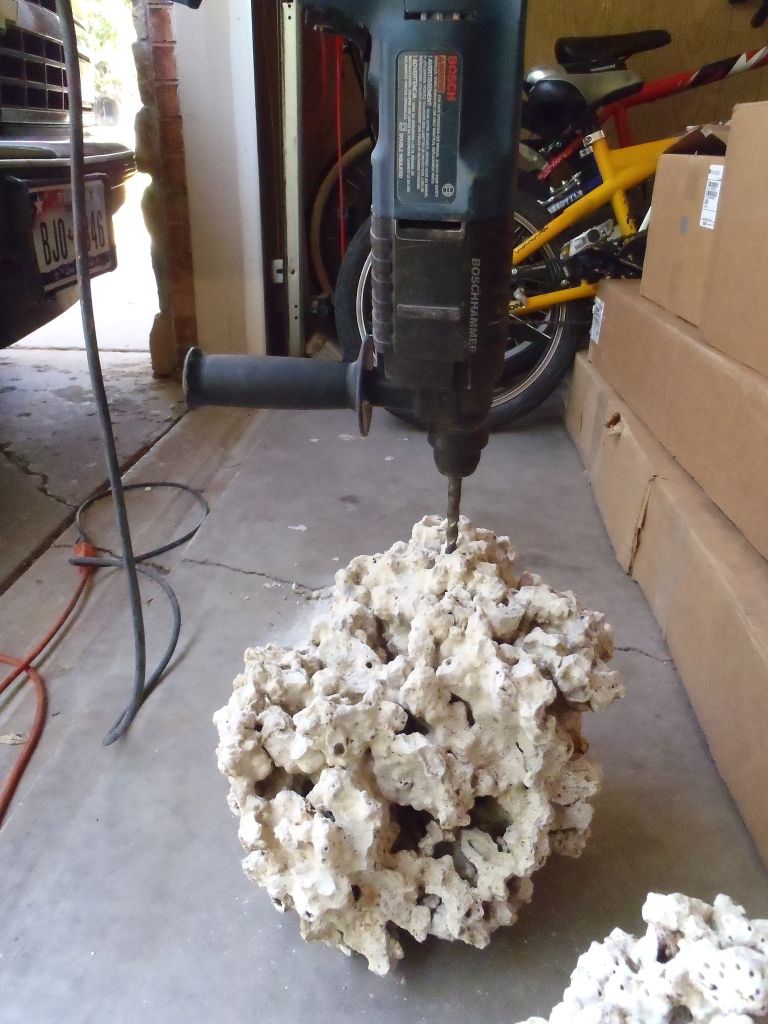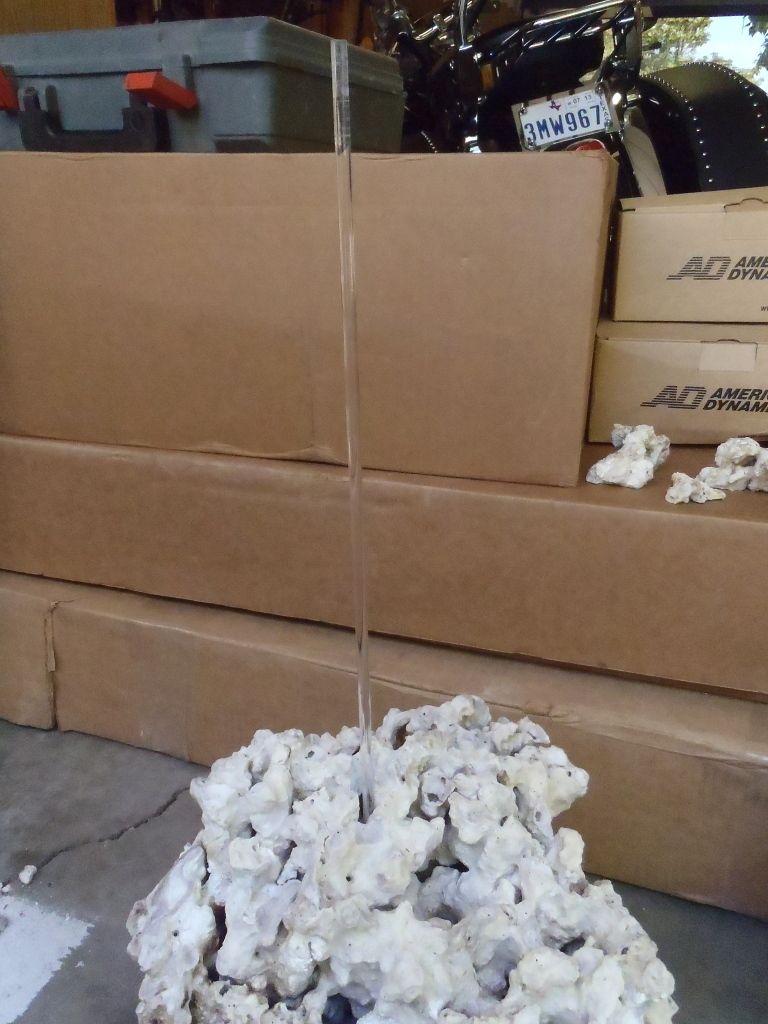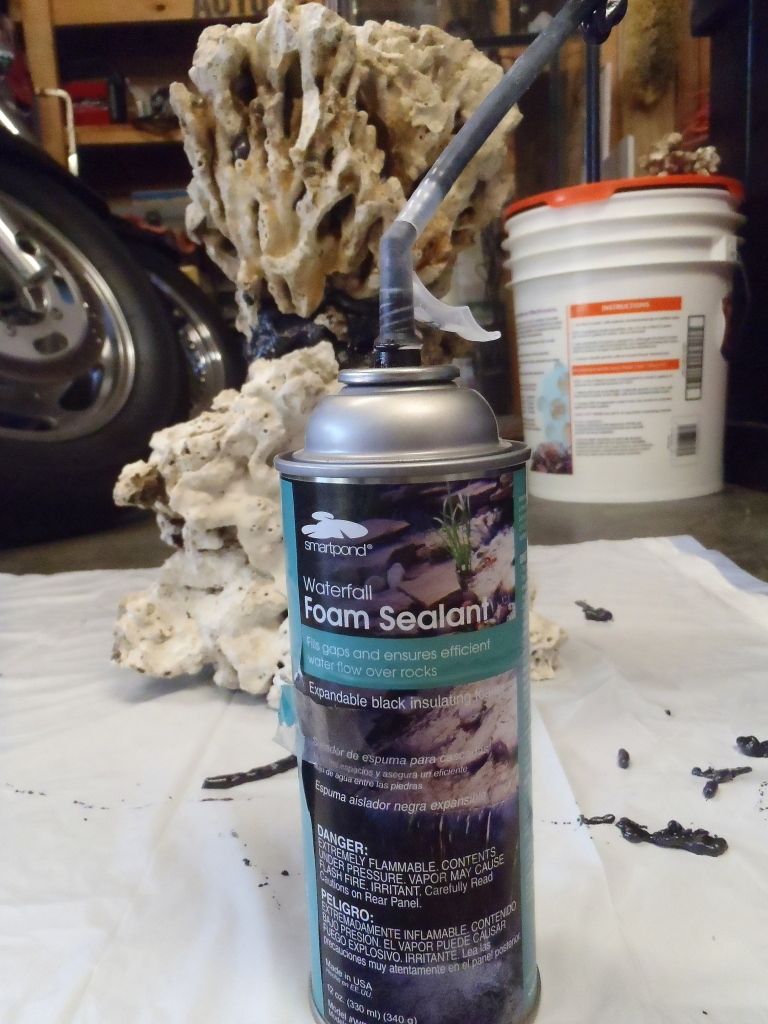


|
 |
|
|
#1 |
|
Registered Member
Join Date: May 2015
Location: Westfield, Indiana
Posts: 74
|
Drilling Live Rock
I am building a new reef only aquarium and migrating some live rock
I have Sterilized and drying the live rock to ensure no critters I am not sure So I plan to drill more holes than I need currently I have used a concrete drill, they work OK but they chatter as the cutting edges are rough My thoughts are #1 Drill with a standard drill bit ??? #2 Drill when the rocks are wet ?? Suggestions Thanks John W |
|
|

|
|
|
#2 |
|
Registered Member
Join Date: Aug 2011
Location: Albany, NY
Posts: 1,934
|
Masonary bit and drill wet.........
__________________
SALINITY NOW.... |
|
|

|
|
|
#3 |
|
Registered Member
Join Date: Aug 2014
Location: NH
Posts: 74
|
A hammer drill and carbide or diamond masonry bit.
|
|
|

|
|
|
#4 |
|
Registered Member
Join Date: Oct 2011
Posts: 102
|
+1 on hammer drill and drilling wet.
|
|
|

|
|
|
#5 |
|
Registered Member
 Join Date: Oct 2011
Location: Minneapolis, MN
Posts: 3,907
|
Most rock is relatively soft and porous calcium carbonate, so a regular drill with s carbide tipped masonry bit works fine. A regular twist bit would probably work, too. Just don't expect to use it for anything afterwards.
__________________
~~~~~~~~~~~~~~~~~~~~~ 120 gallon, coast to coast overflow w/beananimal overflow. Waveline DC 10000 II return pump, 40 gal sump, Octopus XS200 skimmer, T5 lighting |
|
|

|
|
|
#6 |
|
Registered Member
Join Date: Mar 2014
Posts: 187
|
What are you drilling the holes for? Caves?
Depending on the rock type you may be able to use a chisel to make caves. |
|
|

|
|
|
#7 |
|
Registered Member
Join Date: Oct 2007
Location: Cape Cod MA
Posts: 578
|
Thank you again sleepy...I have always used "regular" drill bits when drilling live rock, just don't press down very hard as the possibility of splitting the rock is there (depending on rock size, density and drilling location etc). To adjust the shape of a side, a masonry (brick) hammer is utilized, just be gentle.
|
|
|

|
|
|
#8 | |
|
Registered Member
Join Date: Jul 2015
Location: Monticello, IL
Posts: 819
|
Quote:
|
|
|
|

|
|
|
#9 |
|
Registered Member
Join Date: Nov 2005
Location: San Diego, CA
Posts: 14,655
|
I don't like using regular wood drill bits, while they can bore through rock, the sharp edges can catch and lock onto rock really easy, causing it to bind or spin rock.
A regular drill and a cheapo masonry bit works just fine. I always oversize the bit slightly to the rods I'm using, 5/8" bit for 1/2" rod, that little bit of squeak room helps.
__________________
There's a fine line between owning your tank and your tank owning you! Current Tank Info: SCA 120g RR Starfire, Tunze silence 1073.02 return, 40g sump w/ fuge, SWC Extreme 160 cone skimmer,Geismann reflexx 4xT5, 2x Panorama Pro LED strips, Vortech MP40QD |
|
|

|
|
|
#10 |
|
Registered Member
Join Date: May 2004
Location: Dallas, TX
Posts: 11,033
|
I've never had a lot of luck drilling real live rock. It fractures very easily wet or dry. Also, once you have the holes drilled, they can't always take the stress of zip ties, rods or other attachments.
So even if you drill successfully, that doesn't mean you'll always be able to use the holes as intended. I think it depends on the consistency of the rock. Dense rock probably works ok, but very light very porous rock is harder to keep intact.
__________________
Failure isn't an option It's a requirement. 660g 380inwall+280smp/surge S/L/Soft/Maxima/RBTA/Clown/Chromis/Anthias/Tang/Mandarin/Jawfish/Goby/Wrasse/D'back. DIY 12' Skimmer ActuatedSurge ConcreteScape |
|
|

|
|
|
#11 |
|
Registered Member
Join Date: Nov 2005
Location: San Diego, CA
Posts: 14,655
|
It definitely depends on the rock, the sand stone type stuff crumbles or fractures easy.
If you can learn how to drill between veins that may help, that and go slow w/ little pressure. My rock structures have held up during some fairly good sized earthquakes and I can lift them completely intact doing a tank swap.
__________________
There's a fine line between owning your tank and your tank owning you! Current Tank Info: SCA 120g RR Starfire, Tunze silence 1073.02 return, 40g sump w/ fuge, SWC Extreme 160 cone skimmer,Geismann reflexx 4xT5, 2x Panorama Pro LED strips, Vortech MP40QD |
|
|

|
|
|
#12 |
|
Registered Member
Join Date: May 2001
Location: Saint Louis
Posts: 720
|
The only luck I have had is using a glass/tile bit. The masonry bits all cause my rock to fracture. But with the diamond arbored bit it usually works. also drill wet.
diamond LENOX 1/2-in Diamond Arbored Hole Saw from Lowe's is what I used. This was to make hole for frag plugs. |
|
|

|
|
|
#13 |
|
Registered Member
Join Date: Apr 2012
Posts: 57
|
Hammer drill, masonry bit, drill wet, and be patient. I drill the branch rock and it take me about 3 to 5 min.
|
|
|

|
|
|
#14 |
|
Registered Member
Join Date: Dec 2009
Location: Amarillo, TX
Posts: 182
|
Hammer drill, masonry bit, acrylic rod and pond foam.
I drilled the holes through the rock, inserted the rod and sprayed pond foam into the hole around the rod and between the rocks.    
__________________
You keep using that word. I do not think it means what you think it means ..... Current Tank Info: 120g Reef Tank |
|
|

|
|
|
#15 |
|
Registered Member
Join Date: Aug 2011
Location: Albany, NY
Posts: 1,934
|
That foam is reef safe?!?!?
__________________
SALINITY NOW.... |
|
|

|
|
|
#16 | |
|
Moved On
Join Date: Oct 2004
Location: auburn CA
Posts: 4,021
|
Quote:
I use a 5/8 bit hold in my hand and it chews right through it. That way I can stuff corals in the holes and or stack with 1/2" pvc support pipe. |
|
|
|

|
 |
| Tags |
| drilling holes, live rock |
|
|